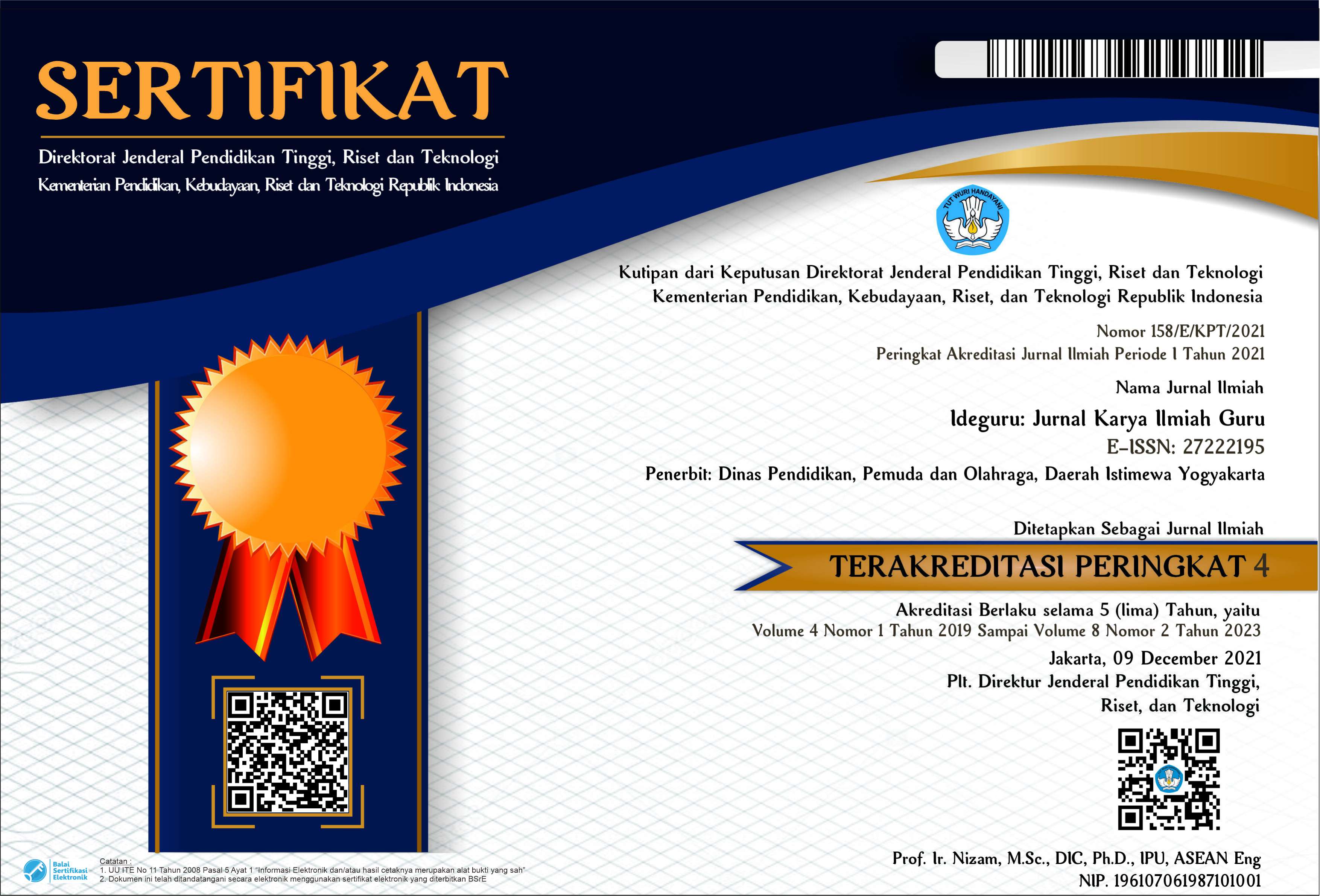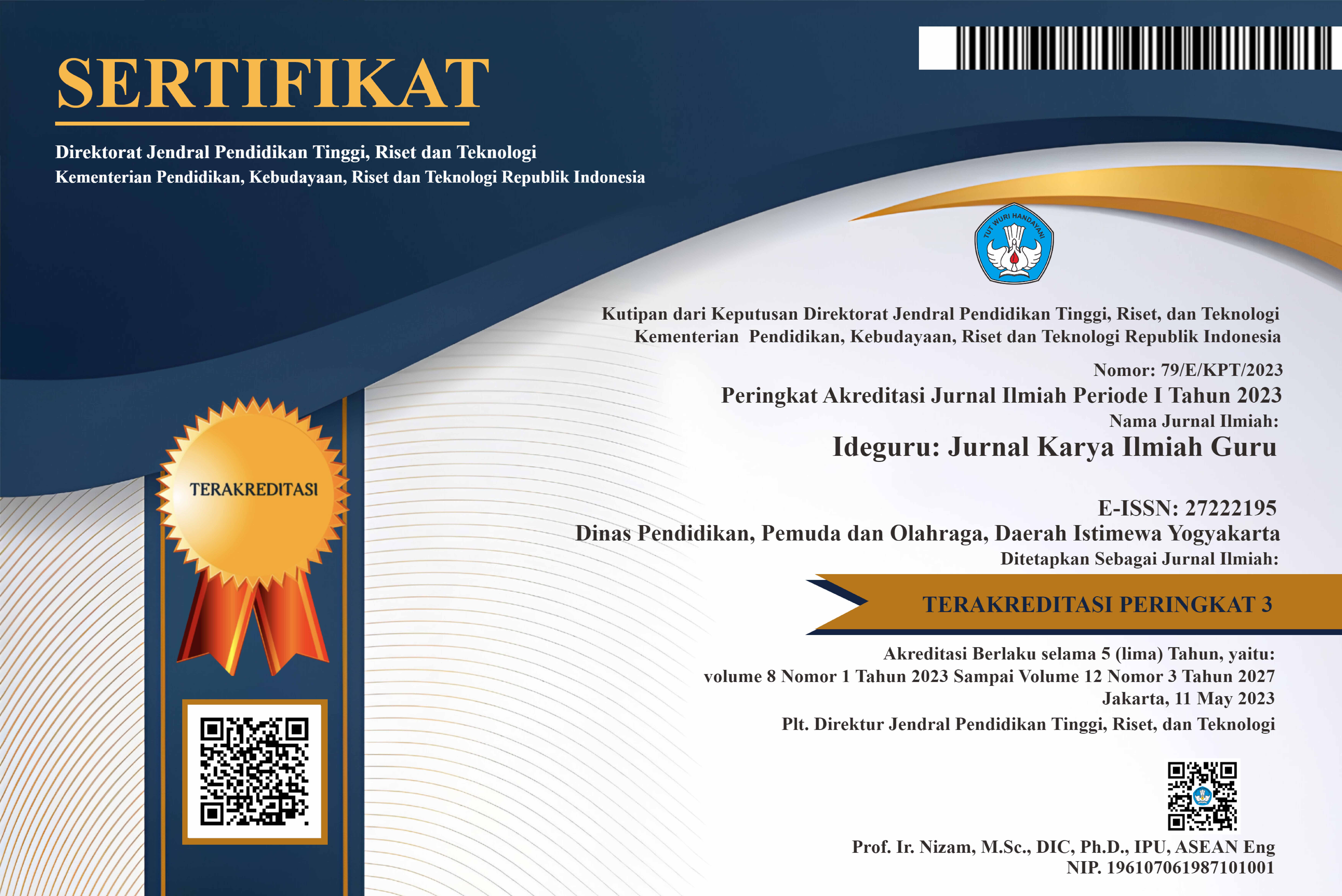Membangun Partisipasi Siswa pada Pembelajaran Kimia Masa Pandemi melalui Pembelajaran Discovery Learning dengan Aplikasi E-Learning
Abstrak
Pandemi Covid-19 telah mengubah paradigma pembelajaran yang semula dengan tatapmuka beralih dengan media daring. Guru menemukan permasalahan pada pembelajaran daring yang dilaksanakan di kelas X MIPA 5 yakni kurangnya partisipasi aktif dan rendahnya tingkat pemahaman siswa terhadap materi kimia. Untuk mengatasi permasalahan tersebut guru melakukan Penelitian Tindakan Kelas dengan menerapan pembelajaran Discovery Learning melalui aplikasi E-Learning pada materi konsep mol dan stoikiometri yang tertuang dalam dua siklus, dengan tiap siklusnya meliputi empat tahapan: perencanaan, tindakan, observasi, dan refleksi. Penelitian dilaksankan di kelas X MIPA 5 SMA Negeri I Wates Tahun Pelajaran 2020/2021. Instrumen yang digunakan untuk mengumpulkan data terdiri dari lembar observasi siswa maupun guru, perangkat tes pengetahuan siswa dan angket pelaksanaan pembelajaran. Data hasil penelitian dianalisa dan disajikan untuk ditarik kesimpulan secara deskriptif kuantitatif. Analisis terhadap data penelitian memberikan hasil bahwa melalui penerapan pembelajaran Discovery Learning dengan aplikasi E-learning telah dapat meningkatkan partisipasi aktif dan tingkat pengetahuan siswa pada pembelajaran kimia. Terdapat peningkatan partisipasi aktif siswa aspek diskusi pada siklus I dan siklus II dengan skor rata-rata 81% menjadi 89,84%, sedangkan aspek presentasi dari skor rata-rata 56,67% menjadi 91,53%. Hasil tes pengetahuan siswa juga mengalami peningkatan pada tahap pra siklus rata-rata kelas sebesar 4l,72 setelah dilakukan tindakan siklus I meningkat menjadi 84,44 sedangkan pada siklus II menjadi 81,56.
Data Unduhan PDF
Copyright (c) 2023 Setiyarini

This work is licensed under a Creative Commons Attribution 4.0 International License.

 DOI:
DOI:













